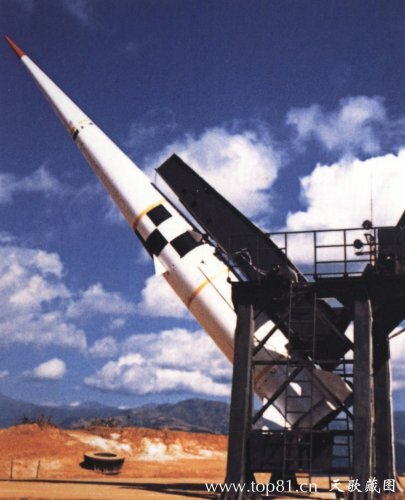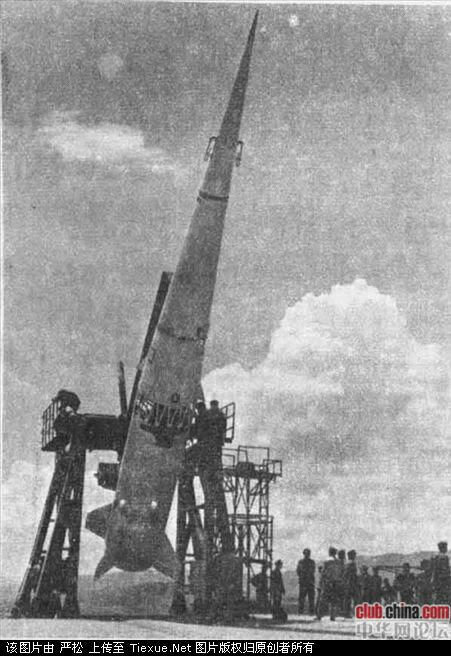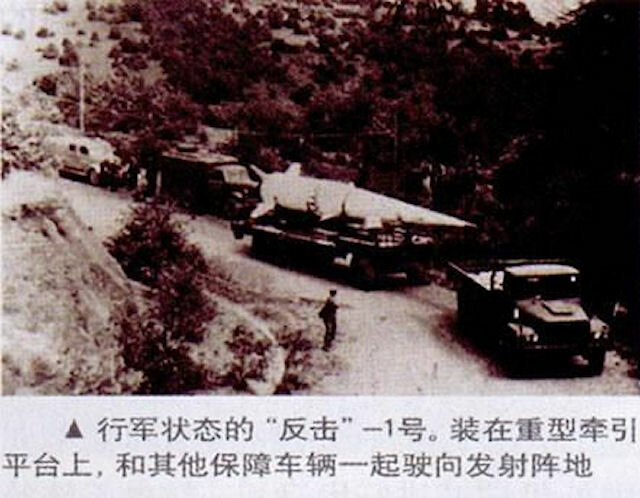- Joined
- 21 April 2009
- Messages
- 13,747
- Reaction score
- 7,670

With where China is headed, it'd probably be prudent to assume they have a nuclear capable BG vehicle.It only seems necessary for the US to develop a hypersonic warhead if current ballistic missiles are not up to the task of deterrence. That seems like a hard sell right now; neither Russia or China have significant ABM defenses (outside Moscow). Also it isn't clear that China is developing a nuclear boost glide warhead, although Russia is known to operate one in very small numbers.
The US still seems in the early stages of hypersonic research and infrastructure development. Further testing and improvements should allow a break out capability to be quickly realized in the future if necessary. Any future ballistic missile (GBSD) should be designed with a glider payload in mind as a future option, but I don't think this is particularly hard to do - Avangarde flies on a Soviet vintage booster.
How do we know they're not working on ABMs? They certainly have in the past and have tested several ASATs.Regardless, it doesn't really change the deterrence logic. China has no defense against US ballistic RVs.
How do we know they're not working on ABMs? They certainly have in the past and have tested several ASATs.Regardless, it doesn't really change the deterrence logic. China has no defense against US ballistic RVs.
China May Have Operational ASAT Program, Reports Say | Aviation Week Network
How do we know they're not working on ABMs? They certainly have in the past and have tested several ASATs.Regardless, it doesn't really change the deterrence logic. China has no defense against US ballistic RVs.
China May Have Operational ASAT Program, Reports Say | Aviation Week Network
I suspect China is working on ABM systems, but they have no historical programs to refer back to and would be starting from scratch in that effort compared to even Russia.



They hit a satellite at about 860km altitude a while back.I suspect China is working on ABM systems,
How do we know they're not working on ABMs? They certainly have in the past and have tested several ASATs.Regardless, it doesn't really change the deterrence logic. China has no defense against US ballistic RVs.
China May Have Operational ASAT Program, Reports Say | Aviation Week Network
I suspect China is working on ABM systems, but they have no historical programs to refer back to and would be starting from scratch in that effort compared to even Russia.
FJ ABM - Wikipedia
View attachment 647861 View attachment 647862
View attachment 647863
Can't really wait on the W-93. Our nuclear warhead infrastructure is decrepit as it is. They need the exercise.How do we know they're not working on ABMs? They certainly have in the past and have tested several ASATs.Regardless, it doesn't really change the deterrence logic. China has no defense against US ballistic RVs.
China May Have Operational ASAT Program, Reports Say | Aviation Week Network
I suspect China is working on ABM systems, but they have no historical programs to refer back to and would be starting from scratch in that effort compared to even Russia.
FJ ABM - Wikipedia
View attachment 647861 View attachment 647862
View attachment 647863
Mea culpa, I'd not heard of it. Probably because it never went to operation. Presumably the warhead was nuclear, given that vintage? I suppose nothing stops the Chinese from breaking with the US practice of conventional interception, but deployment of an effective system would not be quick or go unnoticed. At a minimum, the ABM radars needed to operate any missile defense of any kind ought to be pretty obvious when in operation. I believe China operates a limited number of these looking towards the island chain, but I don't believe any existing system faces towards the pole. The Russians on the other hand have ringed their country with ABM radars, which presumably is a response to US SSBNs which could theoretically launch from almost any direction.
I still think that conventional RVs are enough for the coming decade and that basic research and infrastructure build up, along with the introduction of the first round of conventional weapons (AGM-183, CPS, LRHW) should be the US priorities. Shoe horning a W-93 into a large hypersonic glider can wait. As far as we know, China hasn't done this yet and Russia is counting theirs as part of their New START total, which means it doesn't increase their strategic deterrent.
China isn't the only potential adversary.I don't think there is anything else in the pipeline except the W88 modernization. I agree that we definitely need new warhead production sooner rather than later. I just don't think we need it to be hypersonic for the moment; we just need something that comes down at Mach 20-30 and goes bang.
China isn't the only potential adversary.I don't think there is anything else in the pipeline except the W88 modernization. I agree that we definitely need new warhead production sooner rather than later. I just don't think we need it to be hypersonic for the moment; we just need something that comes down at Mach 20-30 and goes bang.
If you want to deliver nuclear earth penetrating weapons by ICBM/SLBM the stall speeds on the some of the BGVs look to beI don't think there is anything else in the pipeline except the W88 modernization. I agree that we definitely need new warhead production sooner rather than later. I just don't think we need it to be hypersonic for the moment; we just need something that comes down at Mach 20-30 and goes bang.
Where'd you find THAT information?stall speeds on the some of the BGVs look to be within the air-dropped EPW survivable impact velocities.
https://digitalcommons.usu.edu/cgi/viewcontent.cgi?article=2297&context=smallsatWhere'd you find THAT information?stall speeds on the some of the BGVs look to be within the air-dropped EPW survivable impact velocities.
If you want to deliver nuclear earth penetrating weapons by ICBM/SLBM the stall speeds on the some of the BGVs look to be
within the air-dropped EPW survivable impact velocities.
1725 miles is an oddly specific range for something that presumably can trade velocity for distance, up until the glider's stall speed. It also would be just far enough to reach Taiwan from Guam but *not* be able to range the mainland.
The Army Reveals the Range of Its New Hypersonic Weapon: 1,725 Miles
That means U.S. forces could easily strike targets in Russia and China during a conflict.finance.yahoo.com
Depends where it's fired from I guess. Who knows?1725 miles is an oddly specific range for something that presumably can trade velocity for distance, up until the glider's stall speed. It also would be just far enough to reach Taiwan from Guam but *not* be able to range the mainland.
The Army Reveals the Range of Its New Hypersonic Weapon: 1,725 Miles
That means U.S. forces could easily strike targets in Russia and China during a conflict.finance.yahoo.com


There will be three missiles CPS missiles in place of each gun. Six total. I have no clue about the VLS tubes, I am sure there is a plan in place for the MK 69 VLS tube
Tomahawks have a 20.6 in diameter. The CPS has 34.5 in diameter according to Naval News. I am guessing that is the diameter. It does not say in the diagram. It just shows a 34.5 inch line across the missile. I am guessing it is much longer as well. I am not a math guy, but I am sure you guys can figure out how many can fit and in what. Current best guess for the weight is around 16,300 pounds.
I wonder how soon it'll be before we have Chinese ships patrolling off the coasts of Hawaii, Cali, & the PNW with Hypersonic missiles
Source? The Naval News article doesn't mention numbers.There will be three missiles CPS missiles in place of each gun. Six total. I have no clue about the VLS tubes, I am sure there is a plan in place for the MK 69 VLS tube

I think it may be due to weight not space.Why would you think only one module could fit in place of an AGS? Would not be at all surprised if you could fit two or three of those 3-round modules at EACH AGS site.
View attachment 667664
Conventional Prompt Strike - Advanced Payload Modules]: OPN funds required to procure 12 Advanced Payload Modules (APM) from the associated vendor.

12 Modules for 3 shps.Maybe this helps:
Conventional Prompt Strike - Advanced Payload Modules]: OPN funds required to procure 12 Advanced Payload Modules (APM) from the associated vendor.

even w 18 one shot wonders against the vastness of Asia and or Europe. what does it protect itself with? We can call it the 1/16th warship.Why would you think only one module could fit in place of an AGS? Would not be at all surprised if you could fit two or three of those 3-round modules at EACH AGS site.
View attachment 667664
How about those 80 missile cells it has built in? Those are staying in. Like really, even assuming a 50 percent reliabity rate on 40 loaded SM Weapons, which is the worse case scenerio and Raytheaon will kill itself if the Standards was shown to be that bad which the system never had, that still means that someone has to toss 20 missile at one ship to hit it let alone sink it. Which is no easy feat.even w 18 one shot wonders against the vastness of Asia and or Europe. what does it protect itself with? We can call it the 1/16th warship.Why would you think only one module could fit in place of an AGS? Would not be at all surprised if you could fit two or three of those 3-round modules at EACH AGS site.
View attachment 667664

